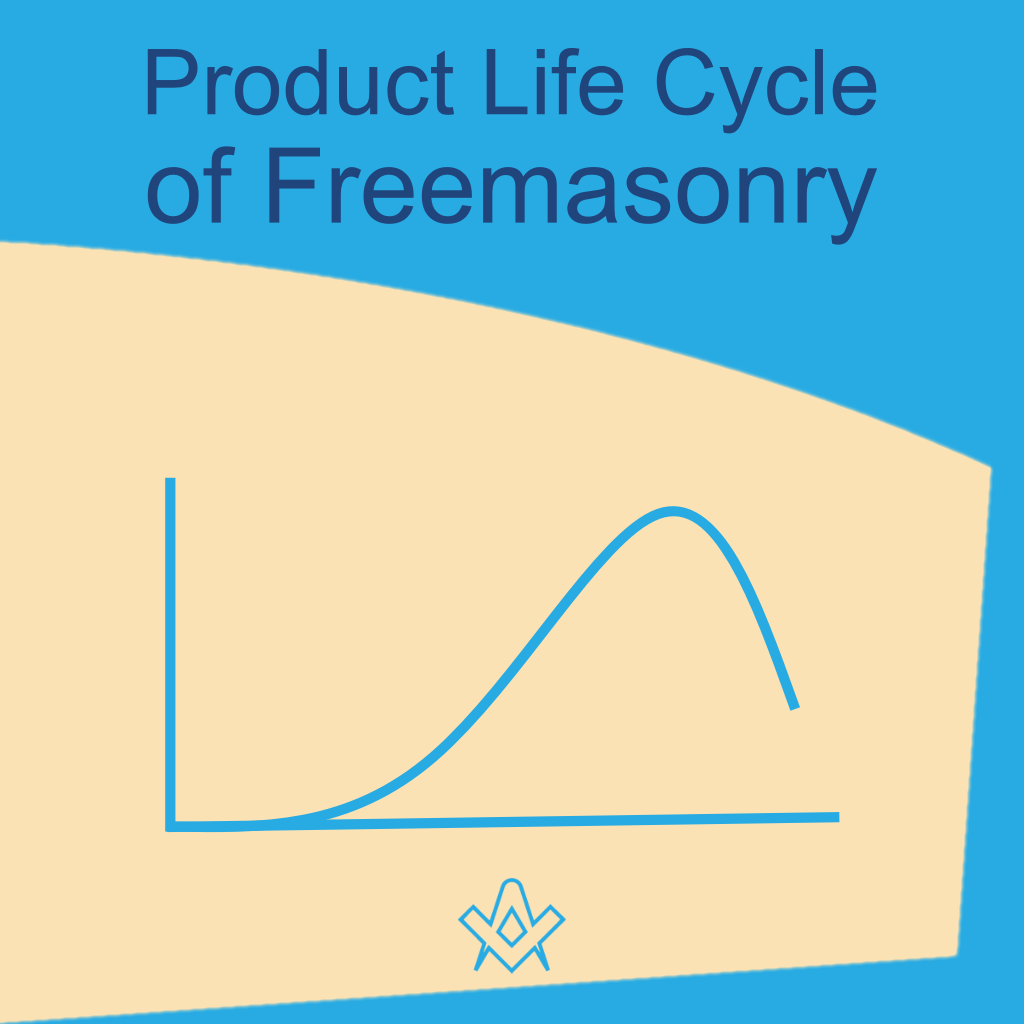Product Life Cycle of Freemasonry
An inconvenient truth
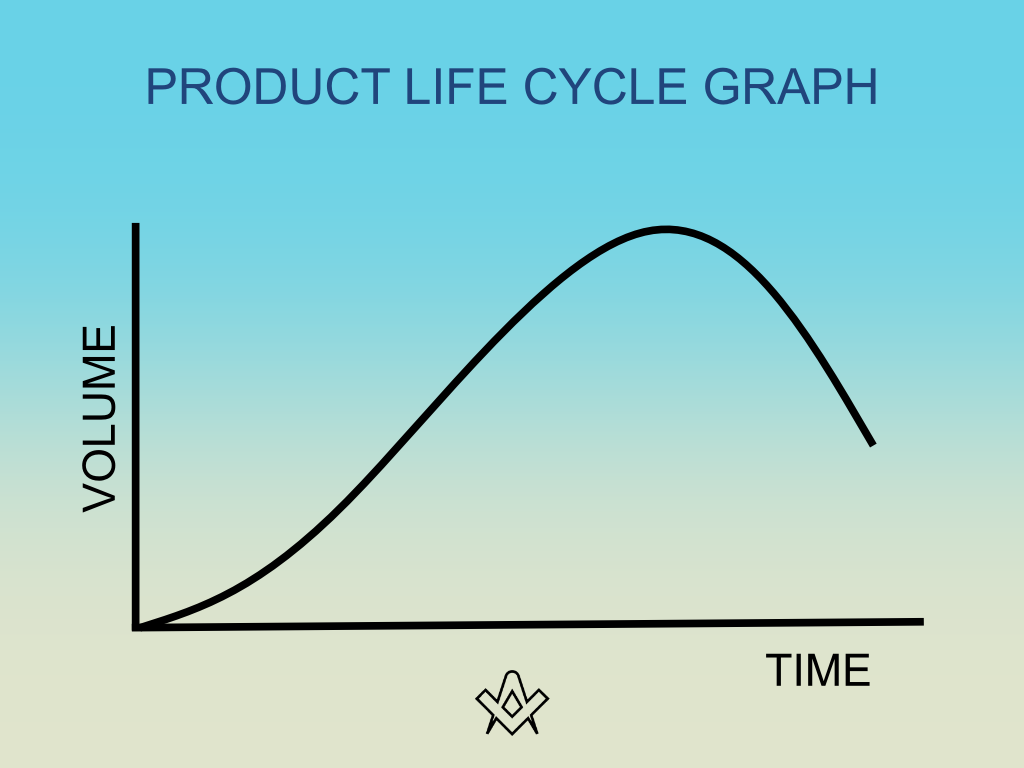
A Standard product lifecycle diagram which shows volume over time. It is not to scale but serves more as a visual overview. There are four stages in a product life cycle: introduction, growth, maturity, decline.
Where do you think
Freemasonry is on
this chart today?
Lets start by understanding Product Life Cycle.
A product, goods or services, is made up of three interlocking parts; packaging, delivery mechanism, and content.
In terms of Freemasonry, the ‘packaging’ is the bricks and mortar Masonic halls, the lodge room, the festive board/the bar, the dining room, and all that a Grand Lodge provides; issuing warrants to private lodges, and Grand Lodge certificates to its members.
The ‘delivery mechanism’ is the physical process of conferring the degrees within the ceremonies, such as the ritual including the charges, lectures, and the perambulations. It is the use of allegory and symbols in putting across new complex concepts.
The ‘content’, is the substance of the lessons and concepts encoded in the allegory and symbols.
The lesson’s primary objective, is to ‘make good men better‘, to make us fit members of a well organised society. It is not about being wealthy in money, but rather wealthy in knowledge.
The skill of a Freemason, and it is a skill, is to be able to use that knowledge in our daily and professional lives to our advantage.
![]()
As a child, I would be given a present that would arrive in a large carboard box. I would often play with the box, the packaging more than the contents: the present. In my imaginary world, the box could be a car, a ship, an aeroplane, or a space rocket. Sometimes, I had more fun from the packaging, than the contents.
As Freemasons, we focus a lot on the packaging; the festive board, dressing up, the regalia, Masonic rank, processing in and out of lodge, etc. For most Freemasons, the primary objective is all about the socialising and the camaraderie.
They are not ready or willing to take office or learn ritual, let alone consider any additional Masonic learning.
Some Freemasons, not all, do take a lot of pleasure with the delivery mechanism, the amateur dramatics element of the ceremonies.
They spend time to learn and deliver a good, and sometimes a great performance. To them, that is what being a ‘good’ Freemason is all about.
They couldn’t tell you the symbolic meaning, let alone, implement the moral lesson into their daily lives. For these Freemasons, the primary objective is about getting their delivery word perfect.
Then, there are yet a few, very few, who do go the extra step and investigate a deeper Masonic meaning. They generally, take one of three specialist subjects:
They study the history of Freemasonry, typically the Craft, especially around the early eighteenth century period, which is a very popular starting point.
They may follow the esoteric study route, looking for deeper meaning in the symbolism.
The third group, might venture further into the study of the appendant Orders.
For these Freemasons, whichever route they take, the study of Freemasonry is the primary objective.
Personally, I am not sure or convinced how the study of Freemasonry helps them to achieve their principle objective – that is to make good men [themselves] a better person in the outside world.
If Freemasonry were a product,
I would simulate it with
a computer operating system.
I think we would currently be
on version 3.XX
Freemasonry Version 1
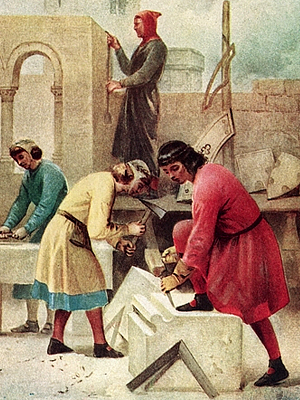
The transition period from Operative Craft guilds, Accepted Freemasonry into speculative Freemasonry Lodges – up to 1717/1721 .
This is based on the idea that operative stone mason guilds began admitting or accepting ‘gentlemen’ into their guilds.
Utilising the one and two admission/acceptation ceremonies.
This whole period of transformation would have met with some resistance from existing guild members.
One can only imagine the operative members horrified at the thoughts of gentlemen with no stone work skills whatsoever, being admitted into their guilds.
Something significant at that time must have caused this change; to put into effect such a radical change in the admissions policy.
One theory is that it was driven by a simple survival initiative. That the operative stone mason guilds were in decline, and to maintain membership, they admitted non-stone masons.
This decline in the number of stone masons might been driven by the move away from quarried stone to construct buildings – to kiln dry clay in the form of bricks.
Still a method of construction, just a different delivery mechanism, a different skill set required.
In modern terminology, clay bricks were a disruptor to quarried stone.
For a period of time, stone mason guilds, operative lodges (mix of both operative and non-operative) and speculative lodges (non-operative members only) would have operated in parallel; as some were in decline, others would prosper.
Some consider that this would have taken place during the whole of the 17th century.
Freemasonry Version 2
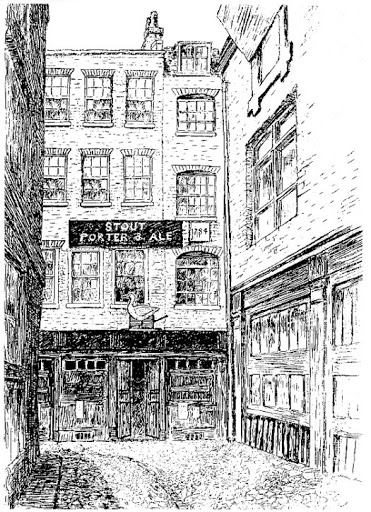
This is the replacement product for Freemasonry V1.
This is the transition period from around 1717/1721, the formation of a Premier Grand Lodge in London and Westminster in England up to 1813, with formation of United Grand Lodge.
This was a time of acceleration in speculative Masonic lodges.
A period of rapid international expansion of Freemasonry, partly due to the creation of military lodges that would in themselves establish overseas Masonic lodges.
There were a few notable cases of Masonic prohibition in some European countries for a few years. This didn’t have a lasting effect; possibly the reverse effect. A typical human response is that, when told they can’t have it, they want it even more.
The concept to create a Grand Lodge out of an annual festival – 1717 to 1721. Establishing and writing a modern set of rules, Anderson’s Book of Constitutions 1723.
This early interest in Freemasonry was fuelled by the age of Enlightenment.
These new members were less interested in the study of Freemasonry, than learning about the new innovations in nature and science. In many respects, Freemasonry was a true learning experience.
There was the evolution and refinement of the three degree Craft system.
Introduction of the Solomon Temple legend and Hiram Abif in an allegoric form, from around 1725.
The creation of breakaway obediences that wanted to adopt more liberal rules, some of which succeeded where others failed.
The perpetuation that Freemasonry was a ‘secret society’ made it even more attractive to new members.
This marketing strategy was hampered a little by the Secret Societies Act of 1799; an attempt to ban secret meetings behind closed doors. Again, this act of trying to ban Freemasonry, possibly did more to make the fraternity even more appealing.
The combination of the packaging, delivery mechanism, and content during this period was a unique selling proposition, which survived and prospered, where others failed.
![]()
Eighteenth century Masonic lodge meetings
evolved to include education and entertainment.
– Ric Berman
Freemasonry was the right product
in the right place at the right time.
The marketing strategy was compelling.
Freemasonry Version 3
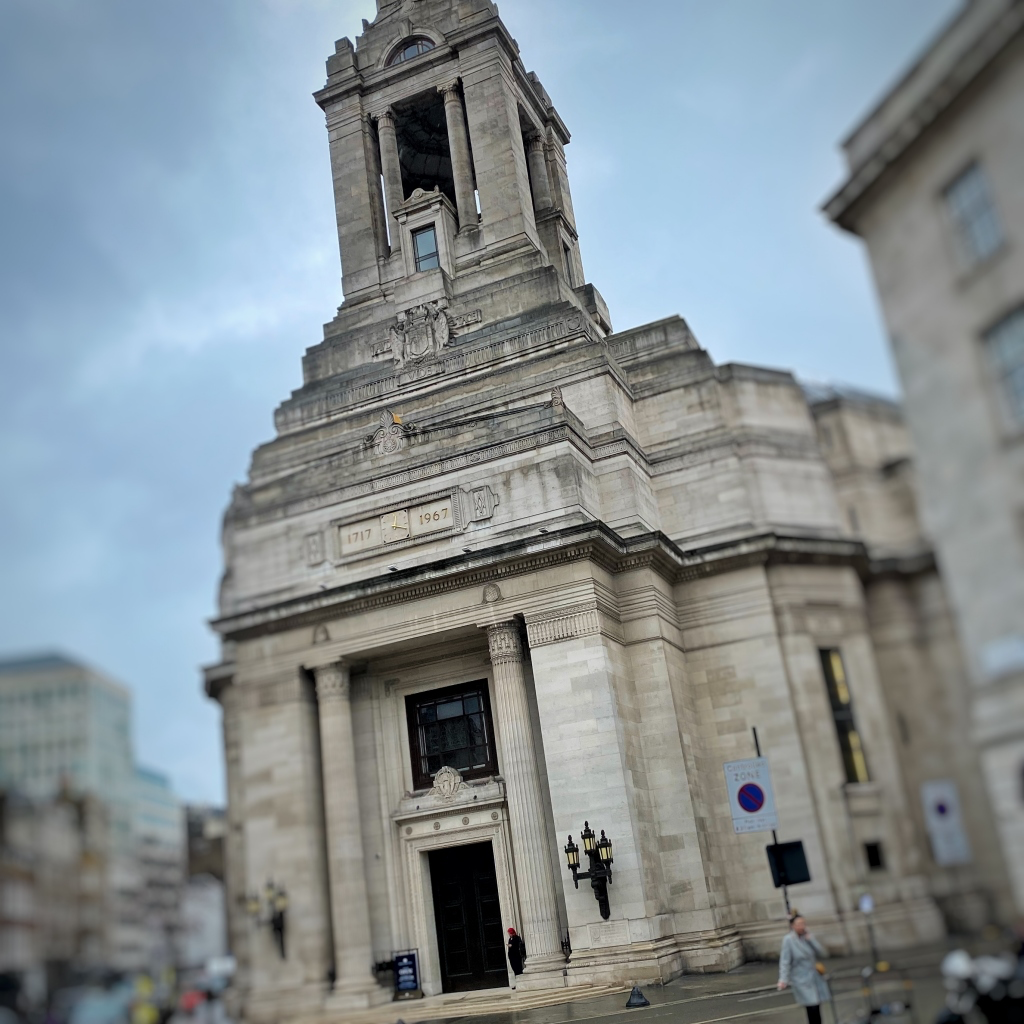
This is the transition period from 1813 to the present date – a stabilisation period. This transition period was initiated by the union of the two apposing English Grand Lodges.
This version of Freemasonry launched with a global standardisation of the three Craft degree rituals, with the introduction of the ‘Emulation workings‘, and with a carefully orchestrated ‘leak’ – Richard Carlile’s Manual of Freemasonry set the standard.
There was a shift from lodges meeting in taverns and inns, to meeting in dedicated Masonic halls.
In product life cycle terms – the continued take up – we saw the product mature in the first half of the 20th century, before a general decline in membership in the latter part of the 20th century and into the first quarter of the 21st.

Kipling’s In the Interests of the Brethren
The Square Magazine published an article in the December 2020 Issue by Rudyard Kipling – ‘In the Interests of the Brethren‘. If you have not read it, please take a few minutes to do so.
It was written by Kipling in 1917, set in London, and gives an inside look at Freemasonry during that period. And demonstrates why camaraderie was the principle value proposition for Freemasonry at that time.
There were a few significant events that had a very negative affect on Freemasonry: the Morgan Affair in the USA in 1826, the Nazi regime persecution in Europe, Franco’s dictatorship in Spain. Fortunately, there was enough underground momentum to reignite Freemasonry in these jurisdictions.
The general decline
started with
the introduction of
home entertainment products
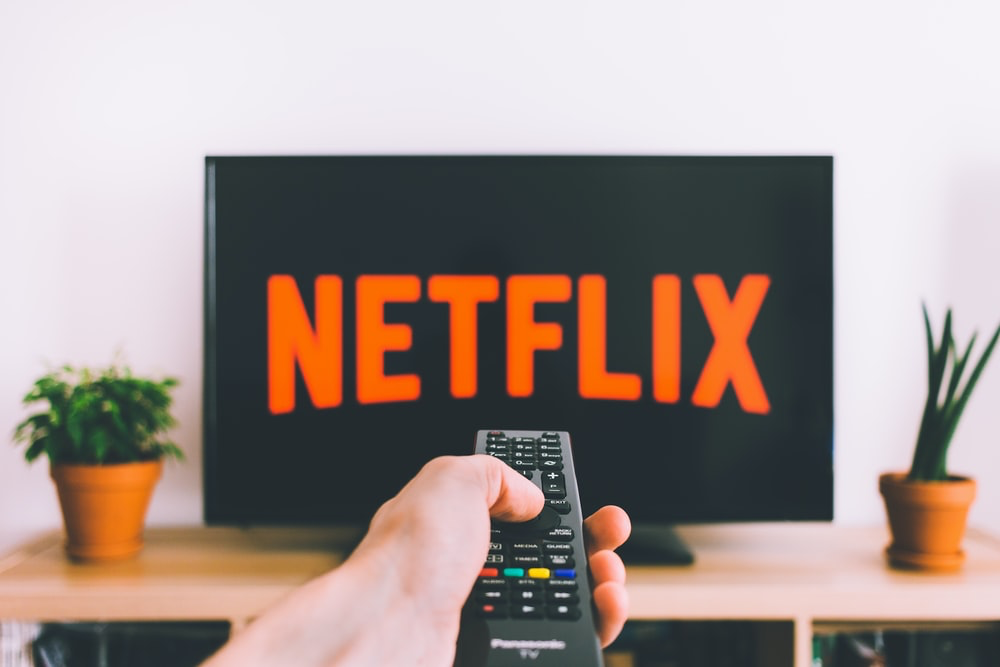
In times past, most people would have gone out to socialise and to get their entertainment. But with the introduction of radio, television, record players, telephone, canned beer, home delivery etc., more people could satisfy their entertainment needs at home – and they did.
This has not just affected Freemasonry, but all clubs and associations that rely on people going out to be entertained.
Currently we are trying to rescue
an eighteenth century
Masonic model
for a twenty-first century world
In modern terminology, Freemasonry is sold on FOMO, the Fear Of Missing Out. Freemasonry is, and always has been, considered a society with secrets, and if you were not a member, you could not discover or participate in these ancient secrets passed down through the centuries. The only way you will find out is if you join.
![]()
Freemasonry is anxious to give of her secrets to worthy men fit to receive them, but not all are worthy, and not all the worthy, seek.
– Carl H. Claudy
After twenty-five years membership of QCCC, the next Masonic ‘secret’ I discover will be the first.
– Gerald Reilly
No matter how you look at Freemasonry v3, it is more about the packaging than the delivery mechanism, and almost nothing about the content.
Before I discuss Freemasonry Version 4, I would like to discuss another simile.
Who remembers Blockbusters?

Blockbusters was an international business established in renting out ‘blockbuster films’. It was a fantastic concept.
The alternative to renting films was to purchase them outright, which at the time was a very expensive proposition – and how many times do you want to watch the same film?
But for about the tenth of the purchase price you could rent the film for the evening.
The whole idea of renting blockbuster movies became very popular.
Blockbuster was a global franchise operation, with outlets springing up everywhere. At their peak they had over 9,000 outlets and employed 84,000 people.
We had a Blockbusters in the city where I lived; you simply drove to the store, picked a movie on tape or later DVD. Of course, more often than not the latest releases were not available as they were all being rented out, it was more by luck than judgment if you could get the latest film.
Nonetheless they had a large enough stock, so there was always something else to watch.
Having watched the movie, you had a day or so to get the tape back to the shop, or face a penalty for late returns; on the whole, it was a great concept.
There were many independent shops also renting movies, but none really had the stock that your local Blockbusters could hold. Blockbusters become a very large and very successful company.
So what happened?
The Blockbuster Executive were locked into a closed mindset – they were inward looking, there was an element of complacency.
Their business model, to-date had been very successful, it would have been quite impossible for the incumbent management to change that model.
In truth, the management would see the risk in changing that model being just too big; they had too much to lose if it were to backfire.
While the middle management, with their new company cars, corner offices, expense accounts, access to the executive dining room, they refused to look ahead.
People will always want to rent new movies, and so long as the Hollywood machine kept churning out new content, the public will want to rent it.
They were absolutely right, from their perspective, they thought their gravy train would never end.
Then over a short period of time, we had the internet, coupled with high speed broadband.
Basically, with the introduction of high speed broadband and a technique call ‘tunnelling‘, it was possible to stream movies across the internet.
Now it was possible to watch any movie, even the very latest, any time, just by streaming it to the home, via internet.
No more disappointments in not being able to get the very latest movie, no late penalties, not even having to get in the car to go and get the movie.

Then, what appears to be from nowhere, we had Netflix. The Netflix Executives by contrast to Blockbuster were in a growth mindset. They had nothing to lose and everything to gain.
The point here is that, as far as the customer is concerned, the content never changed – it is still a blockbuster Hollywood movie.
The only thing that changed for the better, was the packaging – from the bricks and mortar shop into an online shop – and the delivery mechanism – from tape / DVD to a MPEG4 file.
The Internet plus high speed broadband
was the disruptor to the
high street video rental business
Freemasonry Version 4 – (prediction)
This will be a transitional period commencing from around Q1 21st century – fuelled by what is referred to as the ‘digital age‘.
This will see a transformation of Freemasonry v3 from a social dining club – with some charitable giving – focused organisation, into an educational [content] focused organisation.
This transition will remodel Freemasonry into a digital product; preserving, and possibly enhancing the content. The content being the self-development lessons encoded in the allegory and symbols.
There will always be people who want to go to the theatre for a live performance.
There is a lot more who go to the cinema for a 3D surround sound experience.
But neither compare to the number who want movies directly streamed into their own home.
Freemasonry version 3 will be around for a long time – for those who still want the live performance. They want the packaging, and the v3 delivery mechanism; they were never too worried about content anyway.
2020/21 Global COVID pandemic
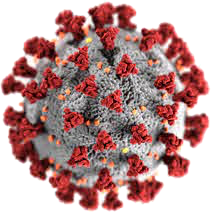
This transition into Freemasonry version 4, will be partly accelerated by the 2020/21 COVID pandemic.
This pandemic has put a temporary hold on the Masonic packaging and delivery mechanism.
In some jurisdictions, Masonic meetings are temporarily on hold, while others have a limited ability to hold meaningful meetings.
Transformation into Freemasonry version 4, may not be an option, based on the following hypothesis :
1 – Pandemics run in a series of 11 waves; the first few waves are very significant, while the last few waves go almost unnoticed.
2 – Everyone on the planet, at some point, will be infected with the COVID virus, and possible more than once by a mutated variant.
3 – The only form of protection from infection is total isolation – or at best, minimised by maintaining social distancing and personal hygiene.
4 – COVID was first reported around November 2019, one person being infected. By November 2020, an estimated 50 million people have been infected, out of a population of 7 billion – less than 1% [who.int]
So long as there is just one person on the planet infected, it is possible they will infect others and COVID continues to spread.
5 – Governments extend their 2020 policies, over a few years to enforce social distancing on the population. Specifically, socialising activities; whilst education and employment organisations remain operational, in some cases reduced, or in some extreme cases, to cease operation – the hospitality industry being the hardest hit. Even family gatherings being prohibited.
6 – Prolonged full or partial lockdown is financially and emotionally unmaintainable. As soon as the lockdown is relaxed, the virus continues to infect.
COVID is not the disruptor,
but more of an accelerant
There are three possible outcomes:
1 – COVID disappears in six months, and we all get back to ‘how it used to be‘ – pre-COVID.
2 – COVID takes five years to get under control. Possibly a mix of herd immunity and vaccine. This is long enough to break a habit, there may well be no ‘how it used to be‘ to go back to. However, some will be waiting on this scenario.
3 – COVID endlessly mutates, and society as a whole has to adapt to the new norm. To some extent, society has started to adapt, and those with a growth mindset will be the ones who can ‘own‘ the situation and adapt and develop to survive.
We will need to maintain
social distancing and
personal hygiene to live
As it took just one infected person, first reported November 2019, to start what became the COVID-19 Pandemic, it only needs one infected person to infect others, to start a new wave of infections.
FM4
How do we prepare for Freemasonry v4
If outcome option 1 materialises, then as a fraternity, Freemasonry will continue to decline in Freemasonry v3 for the foreseeable future, and we can all get back to how it used to be.
It will not halt the decline in membership, it will just take a little longer to transform into FM4.
If the outcome is option 3, and to some extent option 2, then there will be a need to transform into Freemasonry v4. It is not necessarily by choice.
Let’s not kid ourselves, Freemasonry v3 membership has been in decline for the last 30-40 years with little prospect of reversing the trend.
It will not be an ideal situation if Freemasonry v3 slides into decline too fast, before FM4 has had enough routes to grow and prosper.
The two versions will need to operate in parallel for a while. Freemasonry v3 will naturally diminish in to a token membership, and be replaced with a revised version of Freemasonry; FM4.
FM4 is the transition from being a ‘bricks and mortar‘ social networking society to a ‘digitally-based‘ educational self-development organisation.
Who would be interested in FM4 ?
Possibly very few existing Freemasonry v3 Freemasons, as they want to play with the packaging, or are addicted to the v3 delivery mechanism.
Only those who want to work with the content will be interested. People who want to study and learn the content encoded in the allegories and symbols with the primary objective to make themselves a better person.
So who could FM4 appeal to?
What is the potential global market for FM4

Instagram Followers can provide some indications.
Instagram users are typically in the 20+ to 30+ age range and looking for inspirational ideas
(figures November 2020). It is not necessarily the numbers that are significant, but the scale of the numbers.
Freemasonry for Freemasons:
1 UGLE ( United Grand Lodge of England ) Instagram account – approx. 35K followers.
UGLE account is a good indicator, as all Freemasons who study the history of Freemasonry will come across UGLE
2 Midnight Freemasons – approx. 25K
This is a long established and well-respected blog site based in USA
3 Grand Lodge of Russia – approx. 45K
Very active account on Instagram
There are many other Masonic Instagram accounts, in the tens of thousands range, but none appear to exceed 50K followers, out of approx. six million Freemasons globally.
Self-development, leadership, positive wellbeing Instagram accounts:
1 Thinkingmindspage – Positive mindset – approx. 2.3M
2 Goalcast – motivational – 1.7M
3 The good quote – self-development 21M
4 Millionaire mentor – self-development 6.7M
5 Mindset therapy – 2.7M
6 Thinking mind page – 2.3M
This shows that there is considerable interest in young people for self-improvement – they do want to make themselves better people.
Esoteric/occult example Instagram accounts:
1 Higher perspective – 1.2M
2 Third eye thoughts – 2.4M
3 Power of positivity – 5.9M
This indicates that those Freemasons who follow the esoteric side of Freemasonry, also have a significant global interest.
Illuminati social media accounts:
1 Followthepyramid – the Illuminati – 85K
2 Illuminatiam.us – claims official – 45K
These are the straight forward con-men accounts – send them $200 and they will post you $1,000,000 by return – good old fashioned FOMO marketing. It does work, but a lot less effective now than it used to be.
The concept of selling FOMO is in decline, and I would say in decline at an increasing rate. There are just too many offers on social media to ‘get rich quick’, ‘make a seven-figure salary etc. Selling on a promise that is undeliverable.
Product Sales 101
For a product (or service) to have a chance of being commercially viable, it has to be sold. In order to be sold, a product (or service) must have a viable FAB proposition. FAB ( Feature Advantage Benefit ).
A product Feature is some aspect of the product that will normally Increase or Reduce or Control something in a customer’s life. This effect of increasing or reducing or controlling is an Advantage. It does not have to be a unique advantage, but it helps.
A Customer will consider this Advantage a Benefit to their life, if the following 3 conditions are met:
A) they can clearly understand how the feature offers an advantage ( or many advantages in some cases )
B) they have a desire or need for a specific advantage a product feature provides. It must be a tangible benefit to them.
C) the price of acquiring the benefit outweighs the cost of the product. This price can be and is often very subjective.
Freemasonry which is a membership product has always been sold on FOMO. The fear of missing out.
There are these Masonic secrets
and unless you join you will never
be able to participate in them
Many Grand Lodges around the globe, are in the process of implementing social media marketing strategies in order to attract new members.
Social media marketing is at saturation point in all channels. It is a challenge for any organisation to get their message in front of the right potential customers.
The current version of Freemasonry does not have a clearly definable and more to the point, a deliverable FAB proposition.
Selling Freemasonry by making, what is quite frankly lame promises of Masonic secrets – which don’t exist – and wondering why new members leave or just disengage soon after joining, should be no surprise to anyone.
To Summarise
Globally, Masonic membership in its current version has been in decline for the last 30 – 40 years with little prospect of reversing it.
If the COVID-19 pandemic continues to force Governments to impose a ban on social gatherings for a prolonged period of time, this will only act as an accelerant to the decline in membership.
It is not the cause for the decline. The product life-cycle for Freemasonry in its current version is well into the decline phase.
In order to appeal to the next generation of 21st century Freemasons, there will be a transition into FM4.
During this transition period, Freemasonry v3 will continue to decline while FM4 takes route in its early adoption phase.
The two versions will need to operate in parallel.
Freemasonry, or more specifically FM4, will need to adopt a new or revised marketing USP (unique selling proposition) that appeals to the 21st century potential applicants:
Remove FOMO – the Masonic illusion of secrecy. This will need to be replaced with a clear and deliverable FAB (feature advantage benefit) based proposition.
The internet is full of marketing FOMO, offering undeliverable promises. And citizens born in this age are becoming hardened to this type of hyped-up proposition.
There will be a requirement to develop and implement a modified v4 delivery mechanism – (this is Freemasonry v3’s sacred cow).
There are possibly 3 or 4 alternative solutions, but this is a discussion for a future article.
Focus attention on the delivery of the ‘content’ encoded in the allegory and symbolism.
This by far is going to be the most significant development in FM4. Personal development skills and methodologies learnt will be the basis for the revised FM4 unique selling proposition.
The shift from ‘self development’ for the few who choose to undertake the challenge, to seek it out and make their own interpretations, to structured ‘guided’ learning environments for all members.
Remove the unnecessary masonic packaging – and the membership high fixed costs associated with it.
Using distributed cloud computing tools for administration, communication and ‘content’ delivery will reduce membership to a manageable monthly fee.
This could include Blockchain technology plus ‘smart contracts’ to secure global membership details.
Blockchain technology is one of the most significant emerging technologies for the foreseeable future, and can provide an indisputable proof of membership on a global scale.
Freemasonry, has evolved in the last 300 years. It survived because it continually adapted with the change in society throughout that time.
The evolution of Freemasonry v3 into FM4 will take effect during Q1 21st century and beyond, as did the evolution of Freemasonry v2 from Q1 18th century.
Article by: Nicholas J Broadway

Nicholas was initiated into Freemasonry in 1989 in Stonewell Lodge No. 9137, Essex England (UGLE) and was Master in 1995, 2011 and 2016. He also joined other UGLE craft Lodges and is a PZ in the Royal Arch Chapter.
He acquired the title of The Square Magazine in January 2020 and oversees the technical running of the digital publication.
Recent Articles: membership
 A Rose by any other Name may not be the same Explore the profound distinctions between conferred and transmitted Masonic degrees with Bro. Scott Wisdahl. Delve into how presentation quality, personal impact, and setting shape these rituals, and consider the potential for digital adaptations in modern Masonic practices. Join the discussion on enhancing the Masonic journey and preserving its essence. |
 Progression through the Degrees; a Rite or a Privilege? Exploring the layered journey of Freemasonry, Matt DA Fletcher probes the essence of progression—whether it's a mere rite or a privileged path. Delve into a nuanced perspective where every degree is not just a milestone but a fraction of a grander continuum. |
 Quantity vs Quality within the world of Freemasonry Dive into the compelling debate of quantity vs quality within the world of Freemasonry. Discover the transformative focus on attracting members aligned with the institution's values, promising not only growth but quality growth. High-value individuals assure sustainable development with their commitment to serving the brotherhood. |
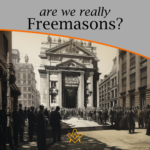 Maybe Freemasonry has opened its doors too wide. Perhaps some have not understood that the survival of Freemasonry in order to achieve its sublime purpose lies not in the number of members it has, but in their quality. Maybe we need less members and more Freemasons. Less men in Freemasonry and more Freemasonry in men. |
 What is ritual and why is it important? P1 Delve into the profound world of Freemasonry rituals and their significance. This insightful piece unravels the underlying importance of rituals, their impact on participants, and the transformative power they hold. Uncover why these centuries-old traditions remain integral to Masonic practice today. |
 Could Freemasonry be helpful for young men? Unravel the Masonic Brotherhood: Could Freemasonry be the antidote to modernity's challenges for young men? Dive in as we explore the Masonic world, its principles, camaraderie, and how its traditional rituals could help forge stronger identities in an increasingly complex world. |
 Discover the remarkable benefits of Lodge Meetings on your well-being. From fostering connections to combating stress, learn how these male-oriented gatherings offer an antidote to anger, hunger, isolation, and exhaustion. Dive into the power of shared experiences, understanding, and camaraderie. Your key to improved mental health awaits inside. |
 Tutorial for a Worshipful Master Unlock the Secrets to Leadership Mastery in our Worshipful Master's Tutorial! Brother Antonio Biella shares step-by-step guidance for Masonic Lodge leaders on honing their roles, duties, and future vision. Discover how to drive growth and engagement in your Lodge, setting ambitious goals and inspiring member participation. |
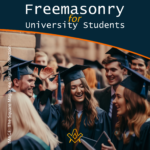 Freemasonry for University Students What are social skillset challenges facing students when they graduate from university ? |
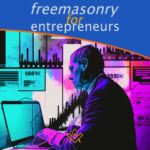 How the Core Values of Freemasonry; Brotherly Love, Relief and Truth Can Be Applied to Improve Productivity For Entrepreneurs |
 Why I became a Freemason: a personal journey of self-improvement Salik Tariq shares his reasons for becoming a Freemason – a journey of self-improvement, finding a community, and personal growth. |
 Freemasonry: Coming out of the Cloisters This paper examines the fundamental tensions on the lines of religion, gender and political ideology that exist in some jurisdictions of Freemasonry. It is on the first of these, religion, on which he makes an initial and exploratory focus. - by Gerald Reilly |
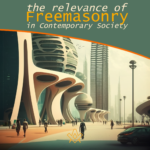 The Relevance of Freemasonry in Contemporary Society The role of Freemasonry in contemporary society is an indispensable one. Despite the challenges and misconceptions it faces, the organization remains steadfast in its humanitarian pursuits and commitment to personal growth and self-betterment. Through its efforts to evolve and adapt to the changing needs of its members and the world, Freemasonry continues to be a vital force in shaping a better future for all. |
 Has Freemasonry managed to revive and thrive after the darkness of the Pandemic? Robert Lomas gives us some (promising) insights. |
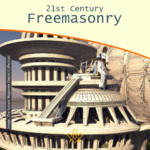 21st Century Freemasonry – a Sign of the Times? A recent article in The Times of London highlighted the dilemma 21st Freemasonry is facing. In this article one Master Mason shares his views of the strengths, and the challenges of modern Masonry. |
 A concept that is both based on our Freemasonic rituals and what we understand as teamwork. This article by Chris Batty examines why teamwork in the lodge is the network that binds us. |
 Lebanese Freemasonry has been both witness to and sometimes participants in turbulent events and forces, which shaped and influenced their world. |
 Is a Masonic Tradition Necessary? Dealing with Masonic tradition is a complex subject that requires careful analysis in order to reach a balanced point on the best etymological definition and the set of discourses and practices, which often end up being presented as such, without, however, presenting bases that support them, often serving only as a discourse that restricts and controls the masses. Fernando Rodrigues de Souza debates this complex subject. |
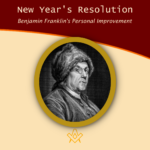 New Year's Resolution with Benjamin Franklin's Personal Improvement Are you ready for a new year's resolution challenge ? To accomplish his life’s goals, at 25 ( around 290 years ago ), Benjamin Franklin developed and committed himself to a personal improvement program that consisted of 13 virtues. You are invited to join me in practicing his daily routine for 2023. |
 The Alberta Masonic Higher Education Bursary Fund is to help the next generation of Albertans, our children and grandchildren, to obtain the education they need to lead successful lives and contribute to the welfare of mankind. As you can see from this little lesson of our history, education is truly a Masonic obligation. |
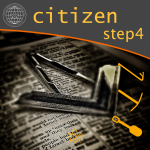 To be a Better Citizen of the World: Step 4 A value proposition for Pure Ancient Masonry as defined in terms of Citizenship; the allegories, symbolism and lessons are a blueprint for all Freemasons to be a better citizen of the world. |
 To be a Better Citizen of the World; Step 3 A value proposition for Pure Ancient Masonry as defined in terms of Citizenship; the allegories, symbolism and lessons are a blueprint for all Freemasons to be a better citizen of the world. |
 In connection with recent article about Freemasonry in the metaverse, we look at how an Egregore applies to Freemasonry in a digital world |
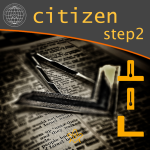 To be a Better Citizen of the World; Step 2 A value proposition for Pure Ancient Masonry as defined in terms of Citizenship; the allegories, symbolism and lessons are a blueprint for all Freemasons to be a better citizen of the world. |
 There are many brotherhoods in the world, and Freemasonry is one of the most significant and successful of them all. This article will be the focus two questions: the importance of brotherhood ? and is there room for improvement in Freemasonry? |
 Intergenerational relations in Masonry: challenges and possibilities Backed with scientific research, Professor Luiz Neto and Professor Alexandre Braune investigate the Intergenerational relations in Freemasonry and explores the challenges and opportunities. |
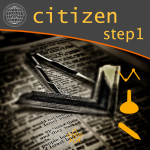 To be a Better Citizen of the World; Step 1 A value proposition for Pure Ancient Masonry as defined in terms of Citizenship; the allegories, symbolism and lessons are a blueprint for all Freemasons to be a better citizen of the world. |
 The Masonic Temple is a platform where both Freemasons and non-Masons, enthusiasts of real art and spiritual growth, connect to the new world of the metaverse. A Freemasonry in the metaverse project, based regular freemasonry principles. |
 Opportunity to fix the Sussex fudge Is there a value proposition for members, that under English Constitution Freemasonry, we have a 4 part offering; Entered Apprentice, Fellowcraft , Master Mason and Companion, conducted in a single craft lodge ? |
 Value Proposition of Freemasonry In addressing declining lodge membership and lack of attendance, we need to assess the value it offers to members. What is value, and what does it mean to you? |
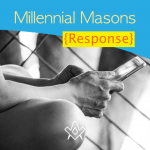 What is a 'Millennial' and what do they want from Freemasonry? You'll be surprised at the answers. |
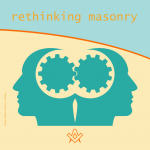 Let us help answer a fundamental question, from a confused newly raised brother asking “What does it all mean and where do I go from here?” |
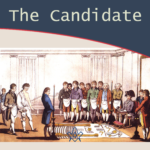 Written in 1930, much of the advice is still relevant today - although some may provoke further thought or debate! |
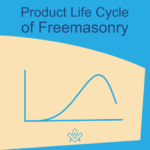 Product Life Cycle of Freemasonry An inconvenient truth about the product life cycle of Freemasonry |
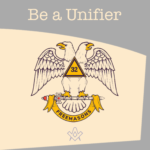 Freemasonry is local. This is where we need to start. We start with our Facebook friends, our neighbours, our colleagues, our lodges… |
 Freemasonry in the time of pandemic The Rule of Six. Localised lockdowns. Second wave? What do we do now?! The answer is simple - engage with members, promote Masonic education and get thinking outside the lodge. |
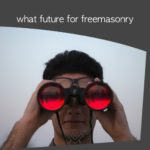 The current functioning of the Masonic movement has some positive aspects and others that are blatantly backward and counterproductive. |
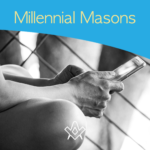 What is a 'Millennial' and what do they want from Freemasonry? You'll be surprised at the answers. |
 How to improve your Lodge Membership Marketing Program. |
 The Anti-Social Impact of Social Media The 'dark side' of social media and its negative effect on our mental health |
 If Freemasonry cannot meet, is this an opportunity to make a change to how we do things? |
 Has your lodge accepted an unknown candidate from the internet? Third in a three-part series looking at the process to accepting candidates via the internet |
 Is the brother of a brother a brother ? Rights to visit - recognition and regularity re-evaluated. |
 The second article in the Unknown Candidate series - Outlining the social media marketing process to attract the unknown candidate to make that first enquiry |
 Ask a random Freemason the purpose of Freemasonry and the likely response will be to “make good men, better”. Research undertaken by James Justin Davis Pennsylvania Academy of Masonic Knowledge. |
 Has your lodge accepted an unknown candidate from the internet? First in a three-part series looking at the process to accepting candidates via the internet |
 Mental Health - Raising its awareness and how we as Freemasons throughout the entire UK can help our fellow brethren and their families when they need it. |
 Share one thought why freemasonry is relevant today - Open question posted on Facebook with a very wide range of responses from Brethren across the globe |
 The Tipping Point of Freemasonry Why do brothers lose interest in Freemasonry and what can we do to get that spark back? At what moment did our own thoughts begin to waver? |
masonic knowledge
to be a better citizen of the world
share the square with two brothers

click image to open email app on mobile device



